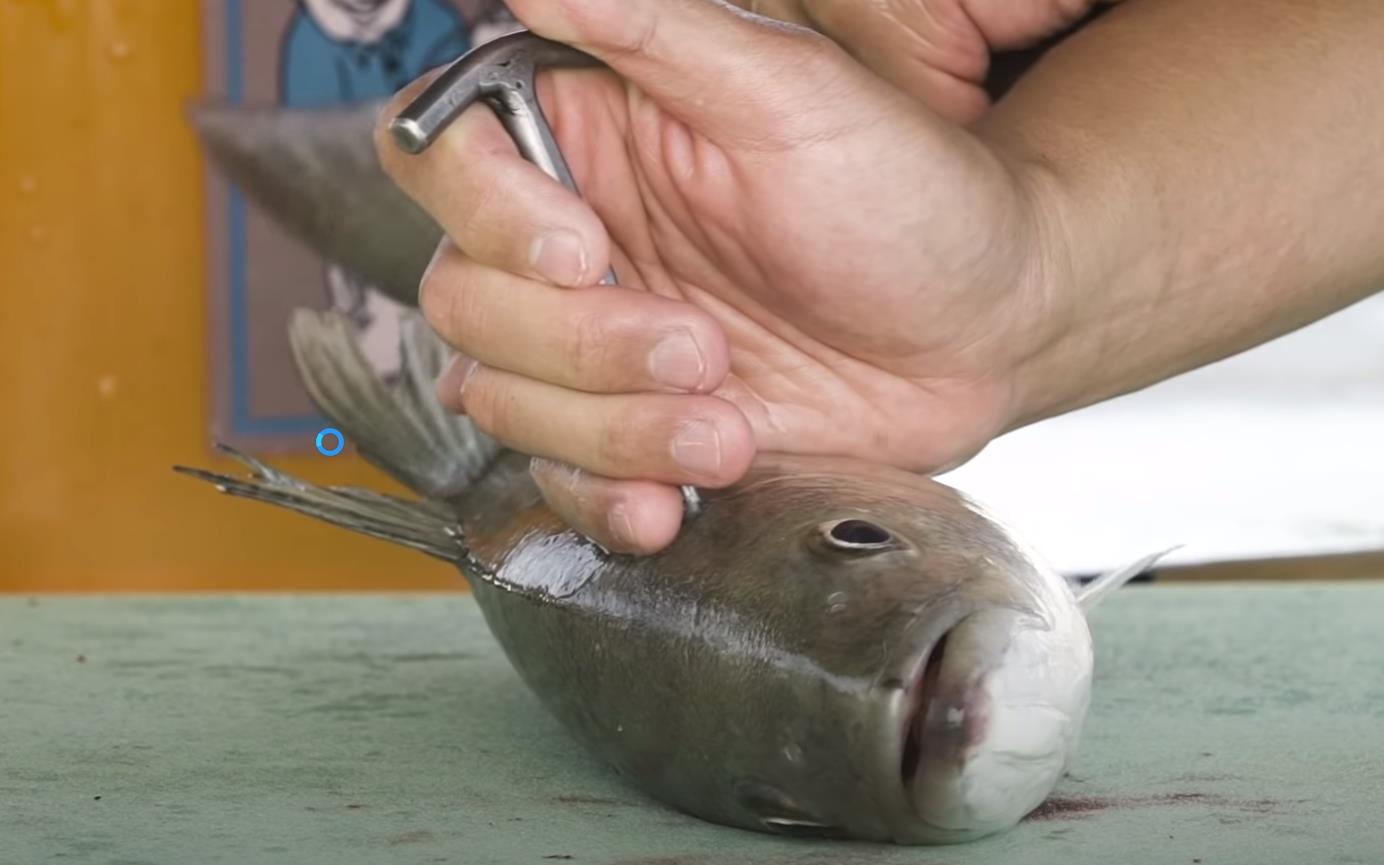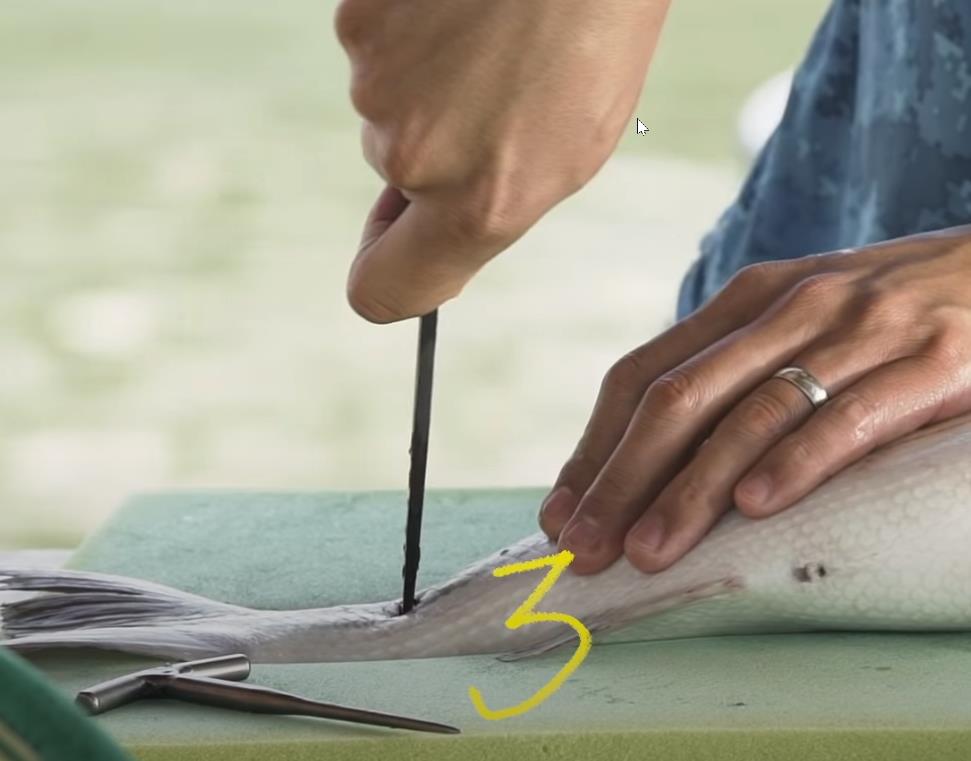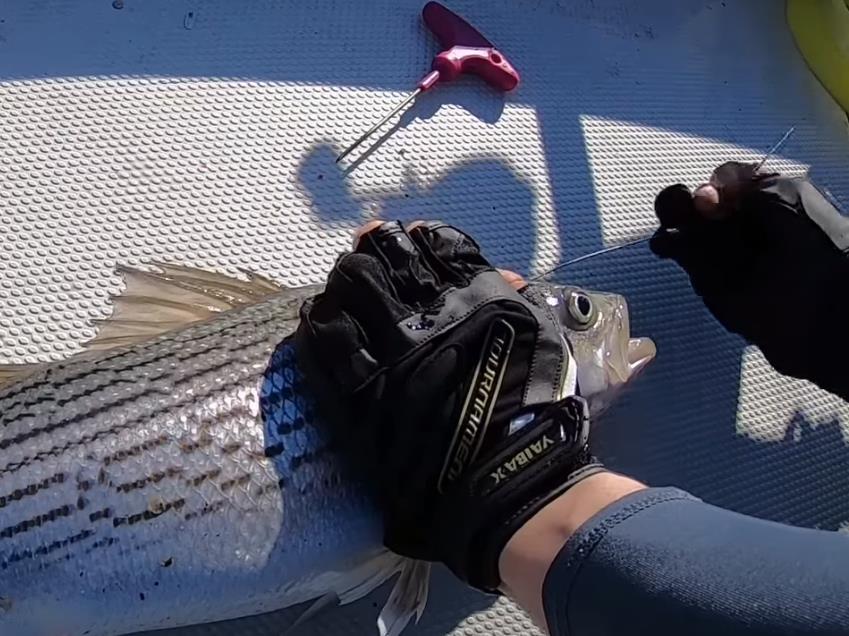The American Indian use to ask permission of the animal’s spirit before dispatching them for food as well as asking for pardon after the animal was killed. Christian’s say grace before meals and in Japan, it’s common to say “Itadakimasu” before eating a meal which means “I humbly receive.” Perhaps that is why the japanese developed the humane way to dispatch a fish called ikejime. The technique is a quick way to render a fish brain dead so it doesn’t suffer but also helps drain the fish of blood without suffering rendering the fish fresher and more preservable. Also, fish killed in this way taste better and last longer frozen.
Ikejime is a humane method of killing fish to maintain the quality of its meat. It was taught to me by a great friend who owned the Sushi restaurant downt the street from my practice. When we fished together, It was impressive how Shin treated the fish in the cooler. I thought is was odd that he was so meticulous with the fish after they were landed but then I thought how it must look to him that I spent so much time and effort preparing to catch a single fish with a fly. I thought is was a religious thing until he explained to me that it was about eating the fish. It takes a striper about 5 minutes to an hour to suffocate to death which is how most commercially caught fish die. Studies show that although fish probably do not experience pain, they do experience stress. At the moment you drive the barb of a clouser into a stripers jaw, it starts to produce stress hormones like adrenaline and cortisol. Come to think of it, so do I at that moment. Fish that struggle intensely for prolonged periods of time during the fight become exhausted. As fish fight, lactic acid builds up in the muscles during periods of extreme function. Sometimes after landing a striper , Ill notice them cramping. Some stripers that I have landed in the lake feel like a big muscle with a cramp in them –the fish is bent at an angle and rigid. Ikejimet is performed by inserting a spike quickly and directly into the hindbrain of the fish which is located slightly behind and above the eye. If you perform it correctly, it causes immediate brain death. If you insert the knife or spike in the precise spot, the fish fins flare and the fish relaxes, immediately ceasing all violent motion. Destroying the brain and the spinal cord of the fish will prevent reflex muscle actions from happening which consumes adenosine triphosphate (ATP) in the muscle which in turn produces lactic acid and ammonia in the muscles making the fish bitter and soggy. Also this delays rigor mortis which speeds up the deterioration of flesh quality once it sets in. After the fish is rendered brain dead with a spike and the spinal cord is dissected from the muscles with a wire inserted into the spinal cord. the fish is exsanguinated by cutting the gills and tail section and submerging the fish in water to let the heart beat out the residual blood from the meat. After brain death the heart still beats due to cellular energy reserves. Removing the blood from the fish produces a better colored and flavored fillets and prolongs the shelf life of the fish while humanely dispatching the fish. This method is considered to be the fastest and most humane method of killing a fish.
The first step on a striper is to spike the striper in the hind brain (Shinkeijime). Next, a steel wire is then inserted into the nerve canal of the spinal cord from the front or tail incision which severs the connection between spinal cord and muscles reducing the small involuntary muscle movements in the fish which produce heat and lactic acid. 


Once the fish is brain dead, the fish is bled out with three incisions (Chinuki). The first two cuts are at the gill arches on both sides and a third on is at the artery in the tail. The fish is placed head down in water and the blood will pump out of the fish.
Next put the fish in ice water to cool it down and now you have respected the life of the fish that you harvested while optimally preserving it.


